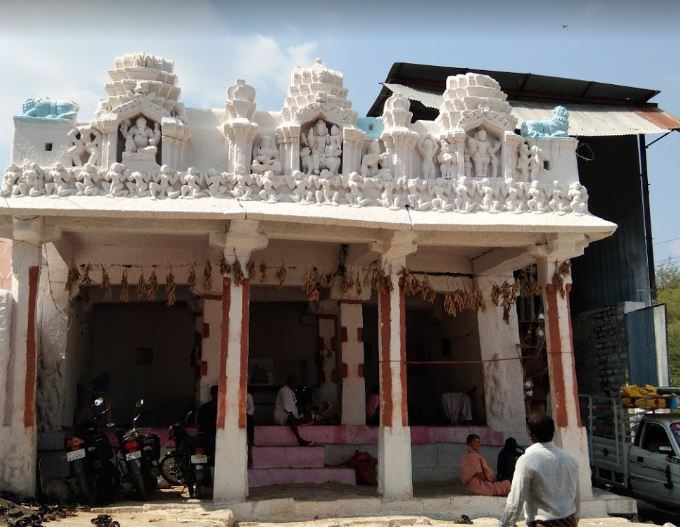
Spirituality
Devaragattu temple, the battleground for a stick fight
Some devotees eat just once in the name of spiritual fasting. Some present their most beloved materialistic possessions to the gods. Many walk barefoot for hundreds of kilometres, and many sacrifice animals to their beloved Divinity.
There are thousands of ways we humans try to please the gods.
Do you know that there is a temple in southern India where thousands of devotees gather to break each other’s heads with sticks? Today, in the blog series of mysterious temples of India, we will visit the Devaragattu temple of Andhra Pradesh, which is also known as the home of the Lathi Mar festival of India.
Legend of Bhairava
Once, two demon brothers named Manikasura and Mallasura performed a severe penance of Lord Brahma. Pleased by their devotion, Lord Brahma gave a boon to both brothers that no one would be able to kill them with any weapons. Now feeling mightier than the Gods, Demons started tormenting the sages, Rishis, and devotees.
All the Gods, sages, ascetics, and devotees came running to Lord Mahadev. Listening to the stories of torture, torment, and destruction, Lord Shiva lifted his mighty trident and prepared for the battle. Lord Bhairava, one of the fiercest forms of Lord Shiva, started the battle with two brothers. On the night of Vijayadashmi, Bhairava clobbered both Manikasura and Mallasura to death with sticks. Since that day, Lord Shiva has been known as Mala-Malleshwara.
The aftermath of the battle was horrendous, leading to the streams of blood flowing through the battlefield. Innumerable skulls from both armies were broken due to war. This battle is said to have taken place on the hilltop of Devaragattu, located in present-day Andhra Pradesh. Villagers started uniquely commemorating this auspicious day.
The Midnight battle
It said that this unique tradition started even before the Vijayanagara era. As the horrendous battle between the warriors of good and evil took place in the same place, villagers re-enact the exact battle on the night of Dussehra. Before dusk, people begin to gather from the nearby villages to participate in the war.
People are divided into Devas (Divine) and Asuras (demonic forces). People from Neladiki, Nerakini Thanda, and Kothapet gather their forces, forming the Team Lord Shiva. They carry the idol of Lord Mala Malleshwara.
Participants from villages like Ellarthy, Arikeri, Maddigeri, Nitranatta, and Sulavai form the opponent team. Their job is to snatch the idol of Lord Mala Malleshwara and keep it with them until dawn. The battle breaks out at midnight. Both sides, wielding the thick bamboos, attack each other. The only way someone can exit the battle is by hitting others on the head, surviving the fight till dawn, or getting their white clothes drenched in blood.
The Temple of Devaragattu
When you drive 135 kilometres north of the city of Anantapur, you will reach the town of Devaragattu. The white arch welcomes you to the temple, surrounded by lush green Bajra fields. There is a temple at the base dedicated to Lord Shiva. A wooden chariot is kept beside the temple, under the shades. During the festivals, the 50 feet wood chariot, decorated with flowers, is pulled by the devotees as a form of devotion.
After climbing about 200 steps, you will reach the hilltop. There is a small temple on the hill dedicated to Lord Mala-Malleshwara. Mala-Malleshwara resides there in the form of four-handed Lord Shiva and Divine Mother Parvati on his left hand. There is a Swayambhu (self emerged) Shiva Lingam in front of the Vigrahas (consecrated idol) of the celestial couple Shiva-Parvati. Nandi, the divine bull vehicle of Lord Shiva, is carved from the base granite on which the temple is erected.
Evolution says that humans got the upper hand over other animals by inventing tools and weapons. Sanatana is a religion that considers every aspect of life. It teaches to love everyone unconditionally; it also teaches the importance of self-defence and empowering the self.
Innumerable Hindu gods yield weapons to protect the devotees and the innocents. Even though Ahimsa (nonviolence) is said to be the greatest virtue, the meaning of nonviolence is an ability to spare others and not to surrender to others. Many sects of Sanatana have promoted the art of self-defence, and the Lathi fight in front of the temple is one the fine examples of it. It says that to spare others, we should be in a position to spare.
We hope you enjoyed reading about the mystical Lathi Mar festival in Devaragattu temple of Andhra Pradesh. Please subscribe to our mailing list to stay connected and receive information about spirituality. In case of any queries, please write to us at info@chamundaswamiji.com. You can check out our YouTube channel Chamunda Swamiji where you can learn Tantra, Mantra, Yantra, and Meditation from His Holiness Shri Chamunda Swamiji.
Post a Comment
-
Subscribe to Our Blog
-
Categories
-
Popular Articles
- Dead moth in the house. What universe is trying to tell you?
- Spiritual Meaning of Moth
- Vivah Bandhan Curse – What Is It and How to Spiritually Heal It.
- The Dasa Mahavidyas
- What are Beej Mantras?
- Tripura Sundari | The Dasa Mahavidya
- Maa Bhuvaneshwari | The Dasa Mahavidyas
- The Five Shades of Tantra
- Ramakrishna Paramhansa – The Man who almost became a Woman
- Maa Chinnamasta | The Dasa Mahavidyas



